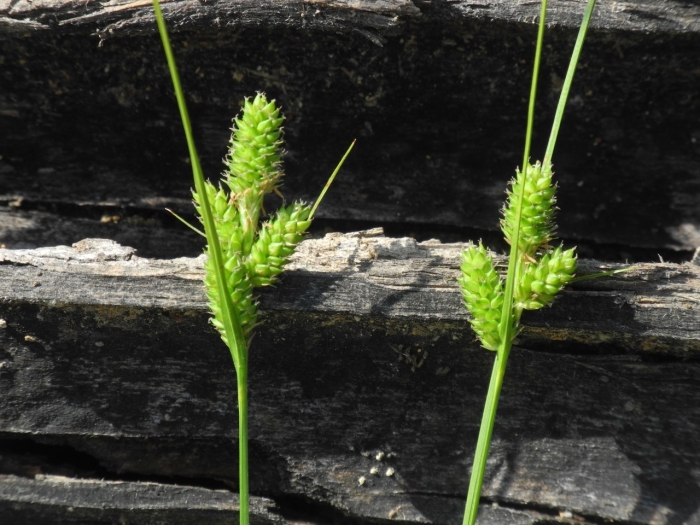Hairy Woodland Sedge
(Carex hirsutella)
Hairy Woodland Sedge (Carex hirsutella)
/
/

Michael J. Papay
CC BY 4.0
Image By:
Michael J. Papay
Recorded By:
Copyright:
CC BY 4.0
Copyright Notice:
Photo by: Michael J. Papay | License Type: CC BY 4.0 | License URL: http://creativecommons.org/licenses/by/4.0/ | Rights Holder: Michael J. Papay | Publisher: iNaturalist | Date Created: 2021-05-04T09:02:31-07:00 |

















Estimated Native Range
Summary
Carex hirsutella, commonly known as Hairy Woodland Sedge, is a deciduous perennial grass native to the understory of deciduous forests, often found in moist to dry woodlands and forest clearings in the Eastern and Central United States and Ontario, Canada. It typically grows to a height and width of approximately 1 foot (0.3 meters), forming dense clumps of fine-textured foliage. The plant features narrow, grass-like leaves that are hairy, giving it a soft texture. The inconspicuous greenish-brown flowers appear in late spring to early summer and are not particularly showy, but they do add a subtle charm to the plant’s overall appearance.
Hairy Woodland Sedge is valued for its adaptability to a range of light conditions, from full sun to part shade, and its ability to tolerate both medium and low water conditions. It thrives in well-drained soils and can be used effectively as a ground cover in woodland gardens, shaded borders, or naturalized areas. This sedge is also appreciated for its ease of maintenance and its contribution to biodiversity, providing habitat for wildlife. While it is not known for aggressive roots or serious disease problems, it can self-seed in optimal conditions, which should be monitored to prevent unwanted spread.CC BY-SA 4.0
Hairy Woodland Sedge is valued for its adaptability to a range of light conditions, from full sun to part shade, and its ability to tolerate both medium and low water conditions. It thrives in well-drained soils and can be used effectively as a ground cover in woodland gardens, shaded borders, or naturalized areas. This sedge is also appreciated for its ease of maintenance and its contribution to biodiversity, providing habitat for wildlife. While it is not known for aggressive roots or serious disease problems, it can self-seed in optimal conditions, which should be monitored to prevent unwanted spread.CC BY-SA 4.0
Plant Description
- Plant Type: Grass
- Height: 1-2 feet
- Width: 0.5-1 feet
- Growth Rate: Moderate
- Flower Color: N/A
- Flowering Season: Spring, Summer
- Leaf Retention: Deciduous
Growth Requirements
- Sun: Full Sun, Part Shade
- Water: Medium, Low
- Drainage: Medium, Fast
Common Uses
Bird Garden, Deer Resistant, Low Maintenance
Natural Habitat
native to the understory of deciduous forests, often found in moist to dry woodlands and forest clearings in the Eastern and Central United States and Ontario, Canada
Other Names
Common Names: Hairy Green Sedge, Hirsute Sedge, Slightly Hirsute Sedge, Carex Hirsute
Scientific Names: , Carex hirsutella, Carex hirsuta, Carex triceps, Carex triceps var. hirsuta, Carex complanata var. hirsuta, Carex triceps var. smithii, Carex capillata, Carex complanata subsp. hirsutella, Carex deflexa var. hirsuta
GBIF Accepted Name: Carex hirsutella Mack.